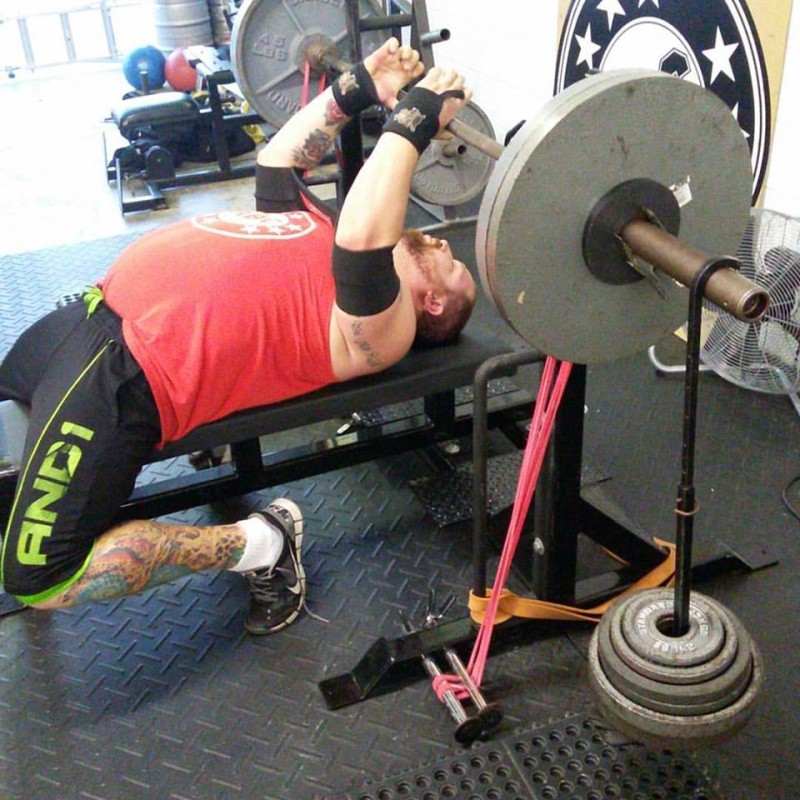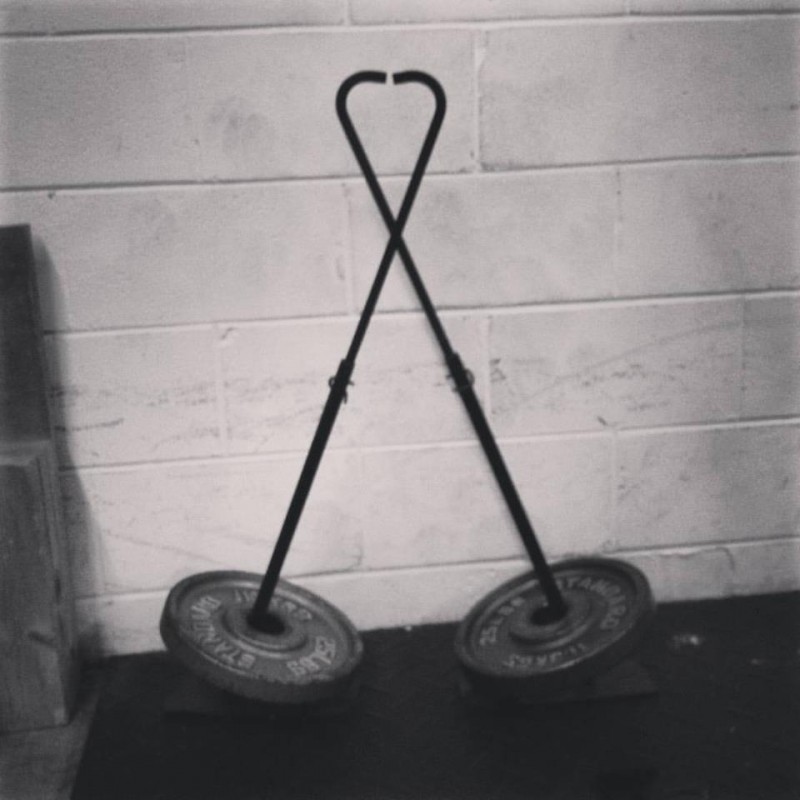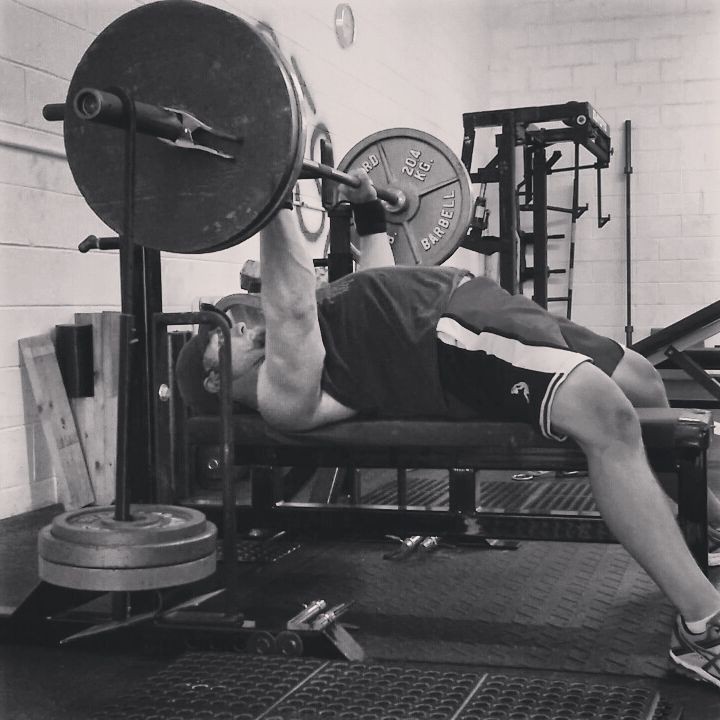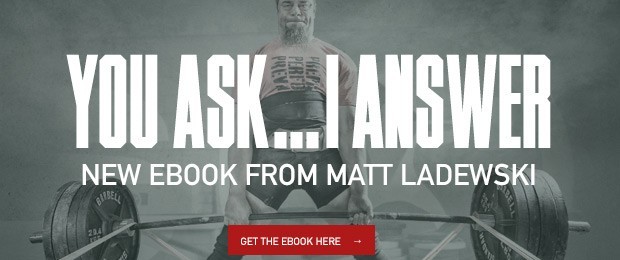
Covered in dust and cobwebs, tossed into basements, corners, and places out of the way are where you’ll find weight releasers. That is how my remaining pairs of weight releasers are being stored right now because they have been forgotten. Initially, there wasn’t much information put out on about how to use them efficiently. Most of the information was on a Westside VHS tape years ago. It was then lost under mountains of new content. The tapes were tossed aside because they were less efficient than the newer methods.
Three years ago, mine were just decorations taking up space in the gym storage area. After a conversation with Clint Darden and his idea of using everything in the gym at least once a year, I pulled them out and put them to use. They have since become a mainstay for me and my lifters. Our training has evolved over those three years to become more efficient, easier to recover from, and more effective.
RECENT: Total Body Conjugate 8-Week Program
Weight releasers were created based on old weight stripping workouts where training partners would pull weight off the bar when the lifter was at the bottom of the lift and then complete the lift with less weight. Once Westside introduced weight releasers in their contrast training video, the popularity grew slightly, but there was very little information about them. As bands gained more traction, they started to collect dust even faster. Now years later, we have found more efficient ways to use these old pieces that sat dormant for so long.
Why Use Weight Releasers?
We have used the weight releasers a few different ways and all have given us some progress. We have maxed out with them, used them on the first rep of speed work, and now use them as a precursor to speed work. Some of the benefits can be measured, but many cannot. The measureable is the speed of the dynamic effort sets and the force produced following the weight releaser sets. The non-measurables include confidence with near max to supra-maximal weights in your hands, the stabilizing of the bar while the releasers swing, and learning to lower heavy weights fast.
These reasons, coupled together, are why I believe the weight releasers to be a very valuable tool for any lifter wanting to improve their bench or squat. In theory, this will also work for squatting, but we have not used them for squatting due to the lack of arm extenders. I believe that the post-activation potentiation of lowering a near max weight will improve the following sets of dynamic effort bench press.
Have you ever seen a lifter smoke a weight only to jump 20 pounds and miss? Many lifters slow way down and can have confidence issues with max weights, certain numbers or new records at meets. By using weight releasers, you can put 90% to 105% in your hands nearly every week of a training cycle. When you go to take a new record, that weight has already been in your hands multiple times. You can press successfully, though be it a lighter weight, after lowering that max weight to your chest.
I believe that the confidence it can build is almost as important as any other factor I talk about in this article. A client came to me with shoulder pain and a 275-pound bench press. After five months, he pressed 330 pain-free at his first meet. He never pressed over 300 in the gym. Confidence can do great things. It could be a placebo effect, but if it works, who cares?
Our Training Evolution with Weight Releasers
The first cycle I used with the weight releasers were after dynamic effort. Six to nine singles were performed with the goal of putting a heavy weight in my hands a second time per week. My training times could not guarantee the help of a training partner. The sequences of exercises were then changed and the weight releasers were done first. This resulted in an increase of our dynamic effort speed. The reps started at nine down and decreased to four with the weight being heaviest after six workouts. After some research into post-activation potentiation we then adjusted to the model we now follow: three singles preceding three sets of dynamic effort. Each single will be with the grip used for the following three dynamic effort sets. I will get more into those details below.
Nearly everyone using weight releasers will follow the same loading ranges. Other than an extreme slingshot cycle (not listed in this article), everyone will use total loads from 90% to 105% of their max. Anything above 110% proved to be too heavy to recover from before the next max effort workout. I recommend starting with three-week waves from 90%–100% then increasing to 95%–105%. If you can handle it, then 100%–110%. The last cycle is used sparingly by those with an extremely good technique.

The accommodating resistance, bar weight, and weight releasers fall into ranges that can be adjusted for each person’s individual needs. If the weight is too light at your chest, you may need to back off on the releaser or accommodating resistance and shift more to the bar weight. The goal is to hit the combination total.
- Weight releaser: 20%–30%
- Bar weight: 60%–75%
- Accommodating resistance: 20%–30%
We do three singles with the weight releasers: one before the close grip sets, one before the medium grip sets, and then finally one before the widest grip sets. After the weight releasers are set, rest two minutes, and then perform the speed sets with 45 seconds rest and then right into the next releaser set. You will use your normal percentages and accommodating resistance for dynamic effort work.
For those of you who are more visual, this is how it looks. You do this for a close grip, then a medium grip, and then a wide grip.
- Weight releaser x1
- Rest two minutes.
- Dynamic effort bench 3x3 or 3x5; use 30–45 seconds rest.
- After 30–45 seconds, move to the next grip and repeat.
If you are feeling good, you can take 1-3 singles above your speed work. This should be done once per three-week cycle. No additional weight releaser singles are taken.
Sample Bar Weight Cycle No.1
This is the standard cycle when not using accommodating resistance. Start here before trying the other cycles.
- Week1: 90% total load (60% bar weight, 30% split between the releasers)
- Week 2: 95% total load (65% bar weight, 30% split between the releasers)
- Week 3: 100% total load (70% bar weight, 30% split between the releasers)
Sample Bar Weight Cycle No. 2
If you find you have trouble stabilizing the releasers or the bar weight seems too light then this is a good compromise.
- Week 1: 90% total load (70% bar weight, 20% split between the releasers)
- Week 2: 95% total load (75% bar weight, 20% split between the releasers)
- Week 3: 100% total load (80% bar weight, 20% split between the releasers)
Sample Accommodating Resistance Cycle
This can be done with chains, long bands, or short bands. We use bands almost exclusively, but chains would be a good feeder cycle before the addition of bands.
- Week 1: 90% total load (45% bar weight, 25% band or chain, 30% split between the releasers)
- Week 2: 95% total load (50% bar weight, 25% band or chain, 30% split between the releasers)
- Week 3: 100% total load (55% bar weight, 25% band or chain, 30% split between the releasers)
These three-week waves cover 90% of what we do. For advanced lifters with excellent technique and compete in gear, you can do a cycle with the slingshot based off your slingshot max.
This video is of my last weight releaser, a set of speed work, and then two singles above my speed weight. My normal weight for dynamic effort was around 185 at the time the video was taken. You can see that the speed with a heavier weight at the end of my nine work sets was still very good.
Here is another video from the same training cycle. I worked my speed weight up from 185 to 225 on my last set. The speed dropped slightly but is still good at that point in the workout.
Over Speed Eccentrics
For our lifters, we use bands with the weight releasers almost exclusively. Bands cause over speed eccentrics. This is where the bands shoot the bar down faster than gravity pulls the equivalent bar weight. This acceleration raises kinetic energy. The formula to figure kinetic energy (E) is E=mV²/2. Mass and velocity are the two variables we can control. If the mass gets too heavy, we will slow down, as if we try to improve the velocity by lowering the mass too much then kinetic energy will drop. We need an optimal mass and velocity. Bands do exactly what we want in this situation.
By using bands, we can increase the mass at the top where we are strongest. As the bar drops, we build velocity while decreasing the mass so we can maximize kinetic energy. You will not get the same benefits with bar weight or chains. That does not mean chains or bar weight can’t be used with some benefits, it’s just not the best combination. For more about over speed eccentrics or kinetic energy, find articles by Louie Simmons and the Science and Practice of Strength Training.
More Questions
Everything we have done has been trial and error. Every cycle, we learn more and try to improve on what we have done. Every cycle also creates more questions. Nothing has been scienced up. I can’t say 100% that we produce more force with the three sets pre-dynamic effort VS for all six sets being done before all dynamic effort sets. That will have to be done by someone who has the means and a large sample size of experienced lifters. I only had a handful of lifters, other than myself, and most were beginner or intermediate lifters.
I have my suspicions and even more questions about the weight releasers—what they do and how we can get more out of these tools. We are lowering a heavy weight not raising it. How does that affect the post-activation potentiation (PAP)? We know that PAP can last five to seven minutes depending on the load and how much recovery we need. So, if it lasts five minutes and we do a second weight releaser set, does that compound the results or are we limited by max strength? Can we trick the body into producing more force or are we just maximizing it? The science part is above my scope. Someone out there will have to do it and it will require experienced lifters.
Until someone proves or disproves any of this, we will continue to hammer out weight releaser sets to make our dynamic effort more effective. There appears to be a few companies out there selling them but I can’t recommend one over another. I am using the original Kowalski releasers I bought 17 years ago. So, if you want to improve your dynamic effort work, give these cycles a try. They can be done nearly year-round with little to no ill effects but I would recommend taking some time off between cycles. Give it a try and let me know how it goes.












